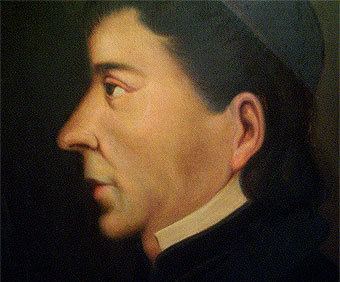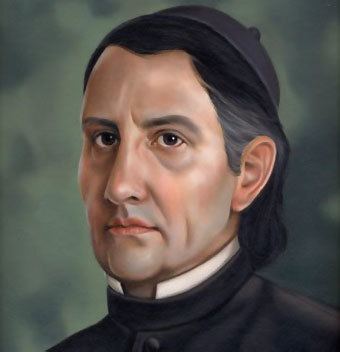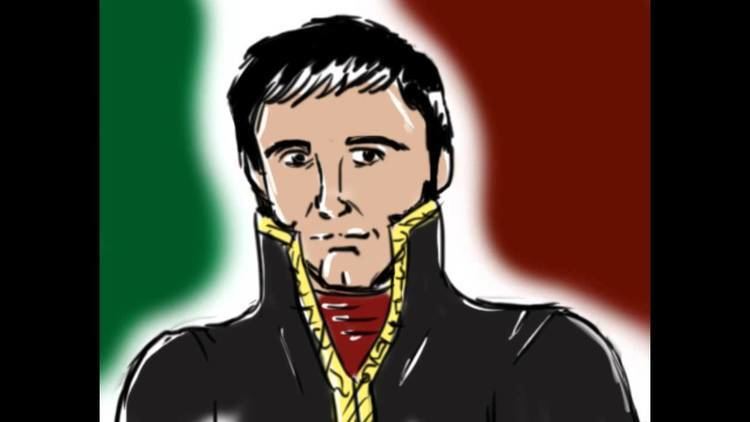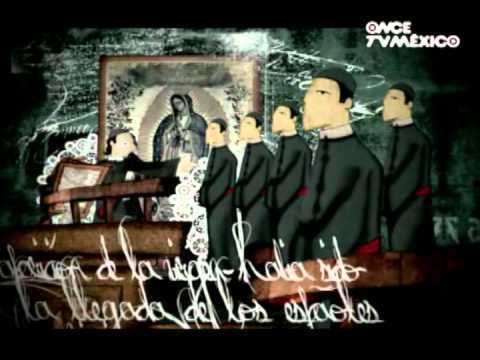Name Servando de | Role Priest | |
 | ||
Similar People Martin Javier Mina y Larrea, Miguel Hidalgo y Costilla, Carlos de Siguenza y Gongora, Guadalupe Victoria, Jose Maria Cos | ||
Lideres presenta fray servando teresa de mier
Fray Servando Teresa de Mier (in full, José Servando Teresa de Mier Noriega y Guerra) (October 18, 1765 in Monterrey, Nuevo León, New Spain – December 3, 1827 in Mexico City) was a Roman Catholic priest, preacher, and politician in New Spain. He was a descendant of the Dukes of Granada and conquistadors of Nuevo León.
Contents
- Lideres presenta fray servando teresa de mier
- Esc fray servando teresa de mier remix vaselina flv
- Education
- The sermon
- In exile
- Return to New Spain
- As a member of the constituent congress
- Death and legacy
- Writings
- References

Esc fray servando teresa de mier remix vaselina flv
Education

At the age of 16, he entered the Dominican Order in Mexico City. He studied philosophy and theology in the College of Porta Coeli, and was ordained a priest. By the age of 27, he had earned his doctorate and was a noted preacher.
The sermon

On December 12, 1794, during the commemorations of the Virgin of Guadalupe apparition, in the presence of Viceroy Miguel de la Grúa Talamanca y Branciforte, marqués de Branciforte, Archbishop Manuel Omaña y Sotomayor and the members of the Audiencia of New Spain, Mier preached a sermon affirming that the apparitions of the Virgin of Guadalupe had happened 1750 years before, and not in 1531. He argued that the original painting of Our Lady of Guadalupe was on the cloak of Saint Thomas the Apostle, who had preached in the Americas long before Spanish conquest, and this had been re-discovered by Juan Diego. In the beginning, nobody said anything about the sermon but one week later, the Archbishop Nuñez de Haro, condemned him to the excomunion, prison, and exile in Spain for 10 years. This sermon, with its bold revision of Mexican history and identity, was seen as a provocation. Our Lady of Guadalupe represented an intense and highly localized religious sensibility that Creole leaders, such as Miguel Hidalgo y Costilla, would later utilize in their opposition to Spanish rule as a symbol of Mexico.
In exile

For his "disrespect", Archbishop Nuñez de Haro condemned Mier to ten years exile in the convent of Las Caldas del Besaya, in Cantabria, Spain; a perpetual ban from teaching, preaching, or hearing confessions, and the loss of his doctoral degree.

In 1796, he was granted permission to present his case to the Council of the Indies. However, on his return from the Council, he took the wrong road and was arrested again. This time, he was confined to the Franciscan convent in Burgos. In 1801, he escaped and took refuge in Bayonne, France. From Bayonne, he passed to Bordeaux and later to Paris. There he was interpreter for the rich Peruvian José Sarea, Count of Gijón.
Together with Simón Rodríguez, Simón Bolívar's former teacher, he opened an academy in Paris to teach Spanish and to translate the Atala of François-René de Chateaubriand. (The Atala was set in Louisiana, with an Indian heroine.) Mier also wrote a dissertation against Constantin-François de Chasseboeuf, comte de Volney.
In Paris, he came to know Lucas Alamán, then traveling as a student but later an important conservative politician in Mexico; Baron Alexander von Humboldt, the Duke of Montmorency, and Chateaubriand. In 1802, he left the Dominican Order and became a secular priest in Rome.
When he returned to Madrid, he was again apprehended, this time for a satire he had written supporting Mexican independence. He was sent to the reformatory in Seville, from which he escaped in 1804. However, he was again arrested and returned to prison, where he spent three years. Then the Pope named him his domestic prelate, because he had converted two rabbis to Catholicism.
In the war between France and Spain, he returned to Spain as military chaplain of the Volunteers of Valencia. He was present at many battles. In Belchite, he was taken prisoner by the French, but he was able to escape again (for the fifth time). He presented himself to General Blake, who recommended him to the Junta of Seville for his services. The Regency in Cádiz granted him an annual pension of 3,000 pesos.
He moved to London, where he collaborated with José María Blanco on El Español, a newspaper that supported the independence movements in Latin America.
Return to New Spain
In London, he met the Spanish revolutionary Francisco Javier Mina. Mina convinced him to join an expedition to New Spain to fight for its independence. They sailed for New Spain on May 15, 1816. With the capture of the insurgents' fort at Soto la Marina on June 13, 1817, Mier was taken prisoner again, this time by the royalists. He was sent to the castle of San Carlos de Perote, thence to the dungeons of the Inquisition, and finally, in 1820, to Havana. Escaping for a sixth time, he fled to Philadelphia, where he remained until the establishment of Mexican independence.
In February 1822, he returned to Mexico, at Veracruz, but was again taken prisoner and held at the castle of San Juan de Ulúa, still in control of the Spanish. The first Mexican constituent congress was able to secure his release; he became a deputy for Nuevo León.
He opposed the Mexican Empire under Agustín de Iturbide, and was arrested again. He was imprisoned in the convent of Santo Domingo, but on January 1, 1823, he escaped again, for the seventh and last time.
As a member of the constituent congress
He was elected a deputy to the second constituent congress. On December 13, 1823, he delivered his famous speech "Discurso de las profecias" (loosely translated, "Prophetic Discourse"). In this speech he argued for a centralized republic or in the event of a federal system being adopted, for its being in moderation. He was among the signers of the Act Constituting the Federation and of the Federal Constitution of the United States of Mexico. Mexico's first president, Guadalupe Victoria, invited him to live in the palace.
Death and legacy
In 1797, he wrote a letter where he confirms that the original date of the apparition of the Virgen de Guadalupe was celebrated by the Mexica natives in September 8 (of the Julian calendar), and by the Spanish in December 12.
Nearing death, he invited his friends to a party to bid him farewell on November 16, 1827. He gave a speech justifying his life and opinions, and died on December 3, 1827. He was interred with great honor in the church of Santo Domingo. In 1861, his body was exhumed, together with 12 others. All the bodies were mummified.
The mummies were exhibited under the claim they were victims of the Inquisition. Some of the mummies, including Mier's, were sold to an Italian who accepted the claim. His mummy was later shown in Brussels, but what became of his remains after that is unknown.
His name is inscribed in letters of gold on the Wall of Honor of the Legislative Palace of San Lázaro, the building that today houses the Chamber of Deputies in Mexico City.
Writings
Mier published many speeches, sermons and letters on religion and politics, including the following:
